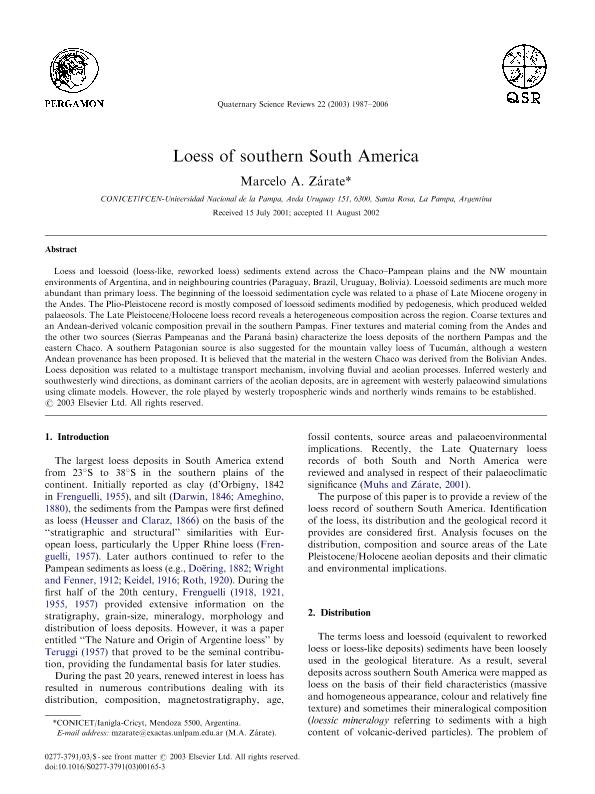Artículo
Loess of southern South America
Fecha de publicación:
09/2003
Editorial:
Pergamon-Elsevier Science Ltd
Revista:
Quaternary Science Reviews
ISSN:
0277-3791
Idioma:
Inglés
Tipo de recurso:
Artículo publicado
Clasificación temática:
Resumen
Loess and loessoid (loess-like, reworked loess) sediments extend across the Chaco-Pampean plains and the NW mountain environments of Argentina, and in neighbouring countries (Paraguay, Brazil, Uruguay, Bolivia). Loessoid sediments are much more abundant than primary loess. The beginning of the loessoid sedimentation cycle was related to a phase of Late Miocene orogeny in the Andes. The Plio-Pleistocene record is mostly composed of loessoid sediments modified by pedogenesis, which produced welded palaeosols. The Late Pleistocene/Holocene loess record reveals a heterogeneous composition across the region. Coarse textures and an Andean-derived volcanic composition prevail in the southern Pampas. Finer textures and material coming from the Andes and the other two sources (Sierras Pampeanas and the Paraná basin) characterize the loess deposits of the northern Pampas and the eastern Chaco. A southern Patagonian source is also suggested for the mountain valley loess of Tucumán, although a western Andean provenance has been proposed. It is believed that the material in the western Chaco was derived from the Bolivian Andes. Loess deposition was related to a multistage transport mechanism, involving fluvial and aeolian processes. Inferred westerly and southwesterly wind directions, as dominant carriers of the aeolian deposits, are in agreement with westerly palaeowind simulations using climate models. However, the role played by westerly tropospheric winds and northerly winds remains to be established.
Palabras clave:
Loess
,
South America
,
Quaternary
,
Paleoenvironment
Archivos asociados
Licencia
Identificadores
Colecciones
Articulos(INCITAP)
Articulos de INST.D/CS D/L/TIERRA Y AMBIENTALES D/L/PAMPA
Articulos de INST.D/CS D/L/TIERRA Y AMBIENTALES D/L/PAMPA
Citación
Zárate, Marcelo Arístides; Loess of southern South America; Pergamon-Elsevier Science Ltd; Quaternary Science Reviews; 22; 18-19; 9-2003; 1987-2006
Compartir
Altmétricas




